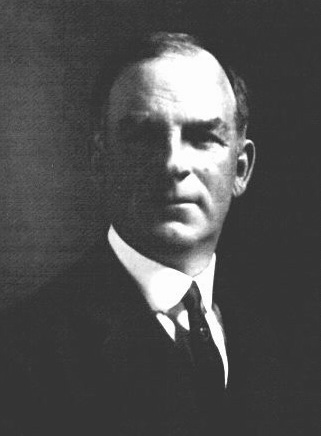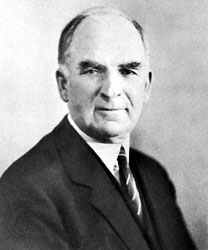
Campbell studied civil engineering at the University of Michigan, then taught astronomy there from 1888 - 91. In 1890 he worked as a summer volunteer at Lick Observatory where he learned spectroscopy under James E. Keeler.

Campbell joined the staff at the University of California's Lick Observatory in 1890, and became director of Lick in 1901. From 1923 to 1930 he was also president of the University of California. He was president of the National Academy of Sciences from 1931 to 1935.
After important spectroscopic studies of Mars, hot stars, nebulae and
Nova Aurigae, he headed a vast program of photographically measuring radial
velocities of stars. He founded the Lick southern station in Santiago,
Chile and designed the Mills spectrographs. As an astronomer he is best
known for his determination of the Sun's motion in the Galaxy from spectrographic
determinations of the radial velocities of stars. For more details, see
Mercury 21, 2, 62 (1992).

Courtesy of the Lick Observatory Archives, Santa Cruz, CA.